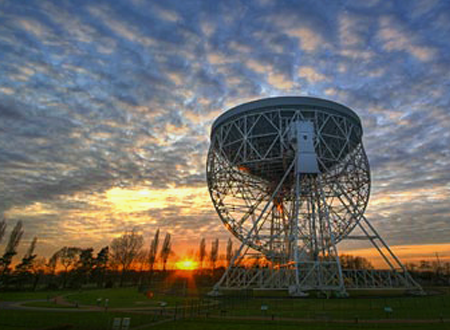Crab nebula gravitational waves - discussions and research
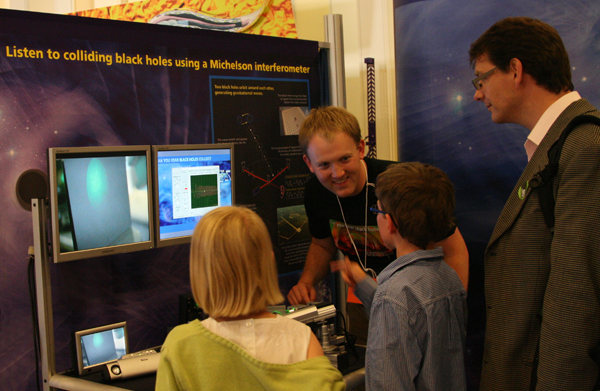
Introduction
The news story suggests lots of interesting topics for discussion and research.
Take a look at those we've picked out from the text. Compare ours with those you found using the methods in Getting the topics.
In groups discuss the differences. This isn't about right or wrong. Your choice is as good as ours, as long as you can explain it.
Now have a go at some of the topics - ours or yours.
To make it more interesting, two Glasgow University scientists, as well as Graham Woan, have talked to us about what they do and how they do it - and why.
They are Martin Hendry and Stuart Reid.
Help with words
After each film clip we explain some of the harder words the scientists use (and some of the words used in these explanations). Just mouseover words in any of these lists to get their meaning.
Try it with these words Graham uses in his introductory clip: solitary, interaction, software, conferences, revelation, collaboration, energises.
And Martin in his clip: integrals, fluids, Navier-Stokes, perception, self-assured, grants, research councils, LISA, decade.
And Stuart in his: PhD, lab, thesis.
[More words; program, research, mathematical operation, value, application, equation, mathematical expression, algebra, public bodies, degree, experiment, essay]
Selected topics
It will open a whole new window on the universe.
But scientists have been searching, with more and more sensitive instruments, for forty years.
We are squeezing everything we can get out of these instruments. Everything is being pushed to the limit.
We are squeezing everything we can get out of these instruments. Everything is being pushed to the limit.
We can learn almost as much from things that don't happen as from something that does. They weren't too disappointed.
It will also be one more test passed by Einstein's general theory of relativity.
Gravitational waves have never been detected. Maybe they don't exist.
The Crab Nebula is the remains of a huge star that blew itself to bits almost seven and a half thousand years ago.
A teaspoonful of this matter weighs as much as all the ships on Earth.
That's a pretty small star by any standards.
They are called pulsars.
The more energy it gives off, the more it slows down.
So we are confident that Advanced LIGO will detect gravitational waves.
Wnat more?
It will open a whole new window on the universe.
So what makes it a new window? And what will we see through this window?
Have a listen to Graham and Martin talking about some of the things scientists will be looking at through the gravitational wave window.
[Words: neutron stars, coalescing, frequency, orbiting, black hole, probe, circumstantial, vicinity, deduce, mass, system, volume, observations, detecting, radiation, electromagnetic radiation, observe, accretion disc]
Working in groups, prepare a presentation on the different windows on the universe that astronomers use now. Explain in simple terms what they are and try to find one image you like from each of them. (You might find the links on this page helpful.)
Your presentation should also answer these questions:
What do all the windows used now have in common?
-
In what way is the gravitational wave window different from all of these?
[More words: neutron, density, vibrations, gravity, gravitation, attraction, mass, accurate, particles, orbit, fundamental, electric charge, attract, repel]
But scientists have been searching, with more and more sensitive instruments, for forty years.
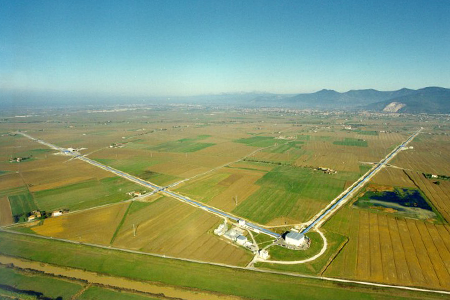
Find out how many of the largest, most sensitive instruments - the ones like LIGO - have now been built around the world. Where is each of them? You might start here (notice the links to the video and interactives).
These detectors are all of a type known as interferometers. They work like this.
[colossal, kilometres, reflection, interference fringes, out of synch]
Gravitational wave interferometers are huge and complicated instruments. But the idea they work on is simple. Their whole point is to compare two distances very accurately.
The distances along the interferometer's arms start off exactly the same. But a passing gravitational wave changes them both, slightly but differently. Light rays sent along the arms and bounced off mirrors at the end measure these changes and the scientists studying the measurements should be able to spot them.
Have a play with this simulator of a gravitational wave detector until you get the hang of what it's all about. Draw a simple diagram and explain it to your colleagues.
Now listen to Graham talking about squeezing every last drop out of the instruments and methods.
[devise, techniques, cutting-edge, analysis, maximum, hardware, electronics, mechanics, optics]
[More words: advanced, frontier, devices]
We are squeezing everything we can get out of these instruments. Everything is being pushed to the limit.
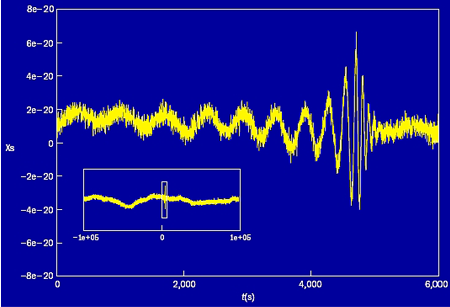
So why do the scientists have to squeeze everything to the limit? Why is it so difficult to detect a gravitational wave?
Well you might not believe it when you stand on the bathroom scales, but gravity is a very weak force.
So gravity waves don't do much. Which means the scientists are searching for very small changes in the arms of their detectors.
So the detectors have to be very sensitive. But that means they pick up all sorts of things that aren't gravity waves at all - footsteps, distant traffic, Earth tremors, even birds and clouds.
And there is another surprisingly large source of noise in the signal.
[ten to the minus, hand-waving, atom, proton, mechanical, vibrating, scale, structures, variations]
All this shaking and shimmering makes detecting a gravity wave a really tough task - for the instruments and for the scientists studying the measurements.
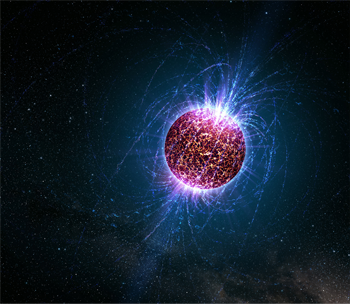
Let's look first at squeezing the most out of the measurements. How can the scientists tell by looking at these if a gravitational wave has passed by? Well they have to know something about what they are looking for.
[coalescing, neutron stars, orbiting, waveform, generate, orientation, predict, template, data, software, frequencies, audio band]
Have a listen to some of the chirping Graham is talking about (scroll down until you see "Play").
Of course this sound isn't really travelling through space. Sound is vibrations in air and there's no air in space. Gravitational waves don't actually make a sound. So what's this all about?
In groups, put together a presentation using some of these chirp recordings that explains the connection between the chirps and gravitational waves.
The clue is in this part of what Graham was saying.
"If they were sounds." Of course they're not sounds, but they are waves. And so is sound.
So this is all about waves. In particular it's about the frequency of waves.
[nebula, pulsar, detection, radio waves, frequency, source, challenging, optical, electromagnetic radiation]
To research your presentation take a look here (especially at the interactive) and here (especially "What is sound?" and "Sound waves"). You might also like to search for "frequency" and "wave" either on the Internet or using this science education search tool.
Once you've done that, listen to the recording at the bottom of the page here and have a play with the Black Hole Hunter game at Einstein@Home (which lets you search for gravitational waves on your home or school computer), to get a feeling for how hard it is - for human or computer - to find gravitational waves among the mush.
[More words: particle, element, fundamental, electric charge, attract, repel, construct, neutron, density, supernova, planet, orbit, vibrations, frequencies, radiation, regular, pulse, electromagnetic waves, wavelength, visible]
We are squeezing everything we can get out of these instruments. Everything is being pushed to the limit.
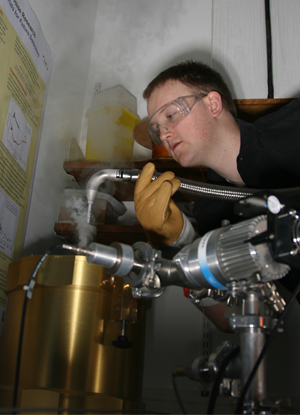
Now let's look at how the scientists squeeze the equipment and materials.
Jim Hough's research group at Glasgow University have been doing this for years, and many of their techniques are now part of the detector GEO600.
Stuart Reid belongs to this research group. Right now he is working towards Advanced LIGO, by investigating better materials to make the mirrors at the heart of the gravitational wave detectors.
[upgrade, transplant, technology, sensitive, instrumental; sapphire, artificially, thermal conductivity, fused silica, suspended, system]
What they're aiming for is "low mechanical loss", Stuart says. So what is that about?
It's all to do with the difference between expensive crystal glasses and cheap ones, he explains.
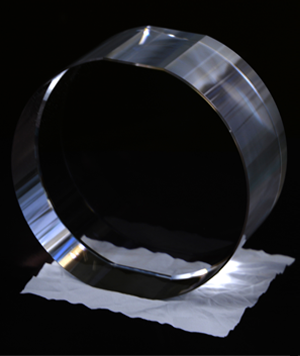
[internal, friction, energy, frequencies, suspension, mechanical, dissipation, thermal, temperature, noise, signals]
So, as you might have guessed from the last topic, we're still thinking about frequency.
Remember:
1) The scientists are looking for gravitational waves by searching for certain frequencies in the gravitational wave measurements.
2) At the scale they're interested in the detector materials are "shimmering" because they're warm.
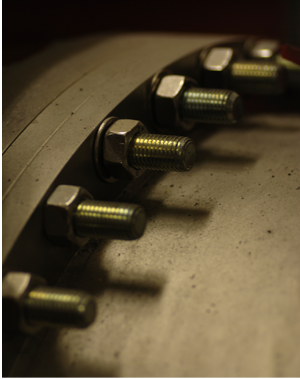
What Stuart is saying now is that it's not just the gravitational waves that have only certain frequencies. The shimmering does too. His work is about keeping those shimmering frequencies away from the gravitational wave frequencies his colleagues are trying to spot.
It's all about stopping a weak signal being drowned out by noise.
Try to think of something else they could do that would reduce this thermal noise. There's a big clue in the word "thermal". Have a go in your groups.
Now listen to Stuart
[thermal, noise, displacement, mechanical, dissipation, internal, friction, silicon, semiconductor, criteria, mass, crystal, laser, power, photon]
Finally take a look at the little diving boards Stuart tests.
[cantilever, sample, mechanical, dissipation]
[More words: corundum, mineral, crystal, regular, gem, conduct, vibrations, particle, disturbance, element, atom, molecule, radiation, electromagnetic radiation]
We can learn almost as much from things that don't happen as from something that does.
They weren't too disappointed.
Take a look at what Graham Woan has to say about learning from something that doesn't happen.
[observational, astrophysics, implies, analogy, predicts, constrains, account for]
In groups, put together two sentences that summarise what Graham is saying here. The first sentence should be about how, strangely enough, scientists can learn, make progress and answer questions, even when they don't see a thing with their instruments.
The second sentence should be about exactly what it is that the scientists have learned about the Crab pulsar by not seeing the gravitational waves it is producing.
Now take a look at Martin Hendry talking about working in gravitational wave astronomy instead of ordinary astronomy - what he calls "photon astronomy".
[observe, detect, sources, lofty, aspirations, funding, photon astronomers, significant, investment, sensitivity, detections, potential, gamma ray]
From what Martin says it's clearly true that scientists can learn a lot from something that doesn't happen. But if this is what they do all the time, why does it make their job quite difficult? Again in groups put together one sentence to answer this.
[More words: accurate, astronomy, physics, chemistry, stars, planets, galaxy, orbit, radiation, particle, photon, electromagnetic radiation, astronomer, gravity, gravitation, attraction, mass, fundamental]
It will also be one more test passed by Einstein's general theory of relativity.
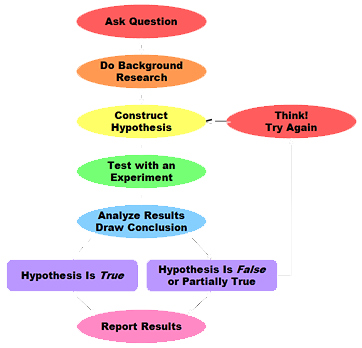
Have a listen to how experiment and theory came together to create the science in this story.
[ecstatic, generate, significant, neutron star, crusts, predictions, energy, radiated]
Now listen to how experiment and theory tell us that gravitational waves almost certainly exist, even though they have never yet been detected.
[phenomena, phenomenon, electron, proton, reveal, pulsar, binary, system, orbiting, Nobel Prize, orbit, radiating, energy, orbit (v), Hulse, Taylor, eliminate, predict, clinching, evidence]
Science is a mix of theory and experiment. People sometimes explain how these fit together by talking about the scientific method. You can find lots of diagrams around the Web that make science look like a sausage-making machine. Just pop in the right ingredients and out comes a tasty piece of science.
But that's not how real scientists work or think. Scientists wondering what to do next never go, "Now what's the next step in the scientific method?"
They might go: "Why did that happen?" or "I don't believe this" or "If I hit that with a hammer I wonder what it would do?"

Have a listen to Graham on how he thinks and why he is a scientist. You would get an answer something like this, in a hundred different languages, from just about every scientist in the world.
[Words: mystery, continuation, urge]
Now listen to Stuart on why he became a scientist ...
[dissimilar, mindset, discourage, soldering iron, inclined, technology, dismantled]
... and how he realised science isn't a fixed set of rules and knowledge but a way of looking at the world that young people can use to make new discoveries.
[aspect, lecture, preconception, undergraduates]
Listen to what happened in Stuart's first year as a student.
[significant, event, survey, supernova, constant, luminosity, standard candle, universe, gravity, evidence, dark energy, expand, imply, cosmology]
Have a discussion with your colleagues and put together a paragraph - a few sentences - that begins: "A scientist is a person who ....."
[More words: neutron, fundamental, electric charge, attract, repel, density, neutron star, regular, pulse, prestigious, solder, alloy, degree, galaxy, mysterious, energy, gravitation, attraction, mass, fundamental]
Gravitational waves have never been detected. Maybe they don't exist.
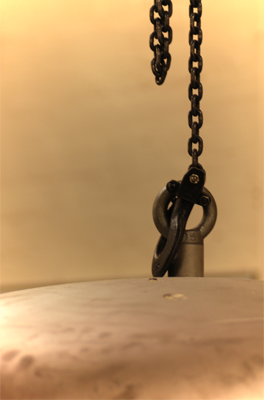
Although real scientists hardly ever talk about the scientific method, they do talk about experiment and theory.
And they do think of themselves as either experimental scientists - those who build and carry out the experiments - or theoretical scientists - those who work on the theory, and try to explain and understand the experiments and suggest new ones.
Have a listen to Stuart talking about the two types of scientist.
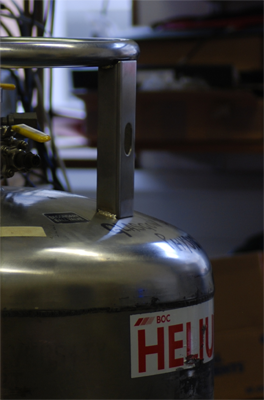
[experimentalist, Jim Hough, theoretician, slant, character, equations, system, derive, similar]
In groups decide which type of scientist you think Graham is - and Stuart and Martin. Give reasons for your answer for each of them.
Now have a listen to Graham talking about his early days as a research student. Does that change your mind about which kind of scientist he is?
[amateur, relatively, CCD, optics, collaborations]
Have a chat and decide. If it doesn't change your mind, explain why not.
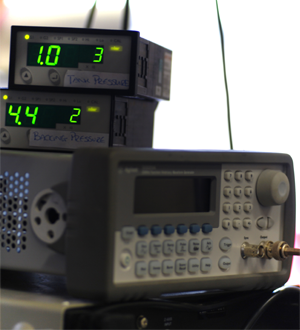
Now listen to what Stuart has to say about other types of people and skills needed to do real science.
[diverse, computer modelling, accurately, predict, technology, research, senior, diversity, project management, timescale, ingenious, sift, gems, colleagues, crucially, younger generation, cutting-edge, grants, communicate]
Suppose you wanted to be a scientist. Which kind would you like to be and why?
At what stage in your education or career do you think you might have to decide?
[More words: specialise, experiment, theory, hypothesis, tentative, mathematical model, sensitive, semiconductor, device, advanced, frontier]
The Crab Nebula is the remains of a huge star that blew itself to bits almost seven and a half thousand years ago.
There seems to be something wrong here. The guest star appeared in 1054. But the explosion happened seven and a half thousand years ago. Surely these can't both be true?
Well yes they can. Investigate how, explain it to the class and work out how far away the Crab Nebula is from Earth. 
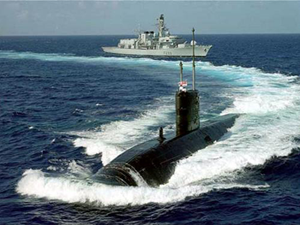
A teaspoonful of this matter weighs as much as all the ships on Earth.
Take a look at a light-hearted study of the size of a standard teaspoon for neutron stars. Have a discussion and try to figure out if this is real science. Explain why or why not.
What does this tell you about how to do science?
What does the weight of a teaspoon of neutron star - without worrying too much about its size - tell you about the amount of empty space in normal matter?
That's a pretty small star by any standards.
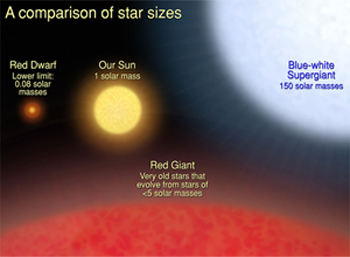
Research the size of stars and think up some simple model to help people grasp how enormous some of them are.
What is the largest known star and how big is it? What is the smallest?
What's the connection between the size of a star and how long it shines? Why is there this connection?
Prepare a presentation with words and images you particularly like.
They are called pulsars.
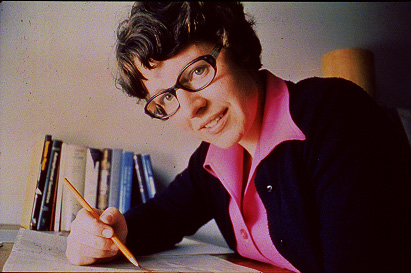
The first pulsar was discovered by a graduate of Glasgow University, Jocelyn Bell, while she was studying for a PhD at Cambridge. It's one of the few times a student has made a major discovery in science.
Watch Jocelyn (now Professor Bell Burnell), talking about her discovery in some short video clips.
[Clip 1: magnitude, positive, negative. Clip 2: quasars, analogy, viewpoint, foreground, signals, incredible. Clip 3: neutron stars, manifest, wavebands. Clip 4: structure, universe, satellites, successor, Hubble Space Telescope, infrared, Gaia, galaxy]
Try to read between the lines of what Jocelyn is saying. Imagine you have done something fantastic at the start of your career and you are writing a letter to your daughter, who is just starting out on hers. What do you say to her?
If you want to learn more about Jocelyn Bell and what she has done, there is quite a lot of material around the Web, including audio clips and an excellent 20-minute video that raises interesting topics for discussion.
[More words: compact, radiation, black hole, neutron, density, supernova, fundamental, electric charge, particle, attract, repel, electromagnetic spectrum, electromagnetic waves, orbit, planet, gravity, gravitation, attraction, mass]
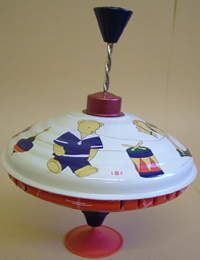
The more energy it gives off, the more it slows down.
If all this energy were coming off as gravitational waves, the scientists would see it in their LIGO measurements.
One of the most amazing things about science is that the way things behave on Earth can tell us what's happening at the other end of the universe. Science gives us explanations that are true everywhere - your living-room, my garden, your teachers' staffroom, the far side of the Moon, the methane seas of Titan or the spiral arms of the Sunflower Galaxy.
One of the most important of these explanations is about energy. Here on Earth things seem to run out of energy all the time. Gas gets burned. Batteries go flat. Your teacher gets tired. Water flows to the sea. Tops stop spinning.
Get hold of a top and play with it. Have a think. Chat to your colleagues about where its energy goes when it stops spinning. You can get a strong clue by spinning the top on a carpet and feeling it - carefully - as soon as it stops.
What we know from studying tops - and everything else that has any kind of energy - is that energy is never lost. It just gets changed into other kinds of energy. Scientists have given this a name - the Principle of Conservation of Energy - and it seems to be true everywhere.
Take a look at each of the examples we mentioned - gas burning, batteries going flat, people getting tired, rivers flowing - and figure out what kind of energy is changing, and what kind of energy it is changing into.
Now take a look at what the story says about the energy of the Crab Pulsar and what's happening to it. Have a chat with your colleagues and put together a few sentences that tell us how conservation of energy and the spinning top helps us understand what's going on in the Crab.
The top's energy changes mainly into one particular kind of energy (but name another that also takes a little). Into which three kinds of energy is the spin energy of the Crab Pulsar changing?
In terms of amounts of energy which of these carries away the least?
So we are confident that Advanced LIGO will detect gravitational waves.
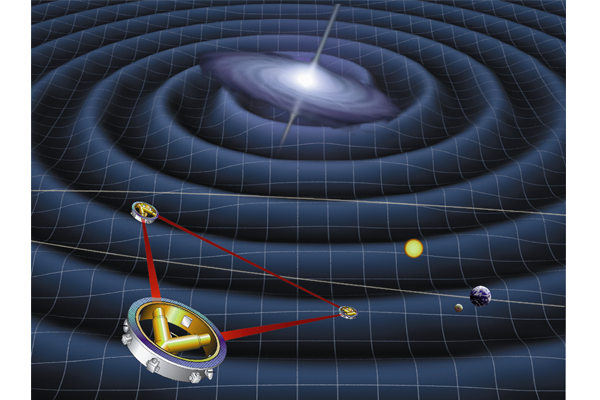
But detecting gravitational waves, as we've seen and heard, is one of the toughest tasks in science.
So why are the scientists so confident?
Well there are more gravitational wave detectors in the world than ever before - and they are getting more sensitive all the time.
[conservative, estimate, upgrade, transplant, technology, GEO600, sensitive, Jim Hough, instrumental, aspect]
Try to complete Martin's sentence at the end of this video clip. Have a chat in your groups and think about it using what you've learned.
Now see if you were right.
[source, disturbance, local, astronomical]
Listen to Graham and try to complete this sentence in your own words: "In a gravitational wave detector a glitch is ..."
[passage, alighting, vibration, synchronised, consistent with, distinguish]
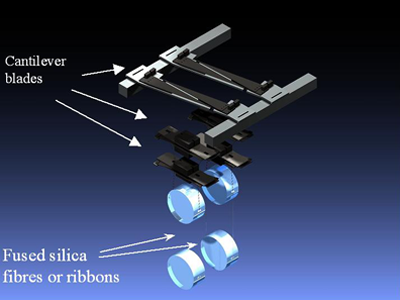 So in what way will Advanced LIGO be so much better? Have a listen then fill in the blanks in this sentence.
So in what way will Advanced LIGO be so much better? Have a listen then fill in the blanks in this sentence.
"The improvements to LIGO should make it .... times more sensitive. But that means it can look at a volume of space that is ...... times as big."
Try to explain the difference in these two numbers.
[sensitivity, current, advanced, regarded, factor, volume, universe, event , sources]
In your groups talk about what you've heard and seen and sum it all up by completing this sentence in your own words:
"The scientists believe that Advanced LIGO will detect gravitional waves because..."
And what about the future? Well after Advanced LIGO the scientists are planning an even more ambitious project called LISA.
[frequencies, probe, priority, confirmed, launch, decade, technology, laser, interferometry]
And what about beyond that?
Well all this is just the start.
[astronomy, far-flung, sensitive, current, generation, equivalent, ancestors]
[More words: radiation, contradict, signals, vibrations, interferometer, interference, particle, device]
Want more?
-
1. Fancy being part of the gravitational wave community by trying to detect them on your home or school computer? Einstein@Home is a program that uses its idle time to search for pulsars using data from the LIGO and GEO 600 gravitational wave detectors.
-
2. Martin Hendry is a scientist who loves to share his enjoyment of science. Take a look at his webpage and outreach work, which covers a huge range of topics - Did we land on the Moon?, Death of the Dinosaurs, Physics of Star Wars, Putting the Iron in Irn Bru, Five Millennia of Scottish Astronomy, and lots more.
-
3. Graham, Martin and Stuart are all part of Glasgow University's Institute for Gravitational Research.
-
4. One of the other main contributors to GEO600 is Cardiff University's School of Physics and Astronomy, which has nice stuff on gravitational waves and the questions about space, time and the universe they will help us to answer:
-
"What happens to neutron stars as their mass is slowly increased? Do they collapse first to a quark star or do they directly form black holes? What is the maximum mass of a neutron star before this could happen? What is the ultimate fate of all matter? Are there naked singularities that are not covered by horizons? Are black holes really characterised by only a few numbers? These are some of the fundamental questions to which gravitational wave observations could provide the clue."
-
4. You might like to listen to an interview Graham gave some time ago as part of a series of audio recordings - called Jodcasts - produced by a group of young astronomers at Jodrell Bank Centre for Astrophysics, near Manchester. Graham's interview lasts 25 minutes. It's a harder than our clips because he's talking to fellow scientists and there's no help with the words he uses.
-
5. Einstein's Messengers is a lovely 20-minute video about detecting gravitational waves produced by LIGO - so very US in style.
-
6. Seven-minute iitroduction to gravitational wave dectors on YouTube.
-
7. Take a look at the latest jobs at LIGO.

